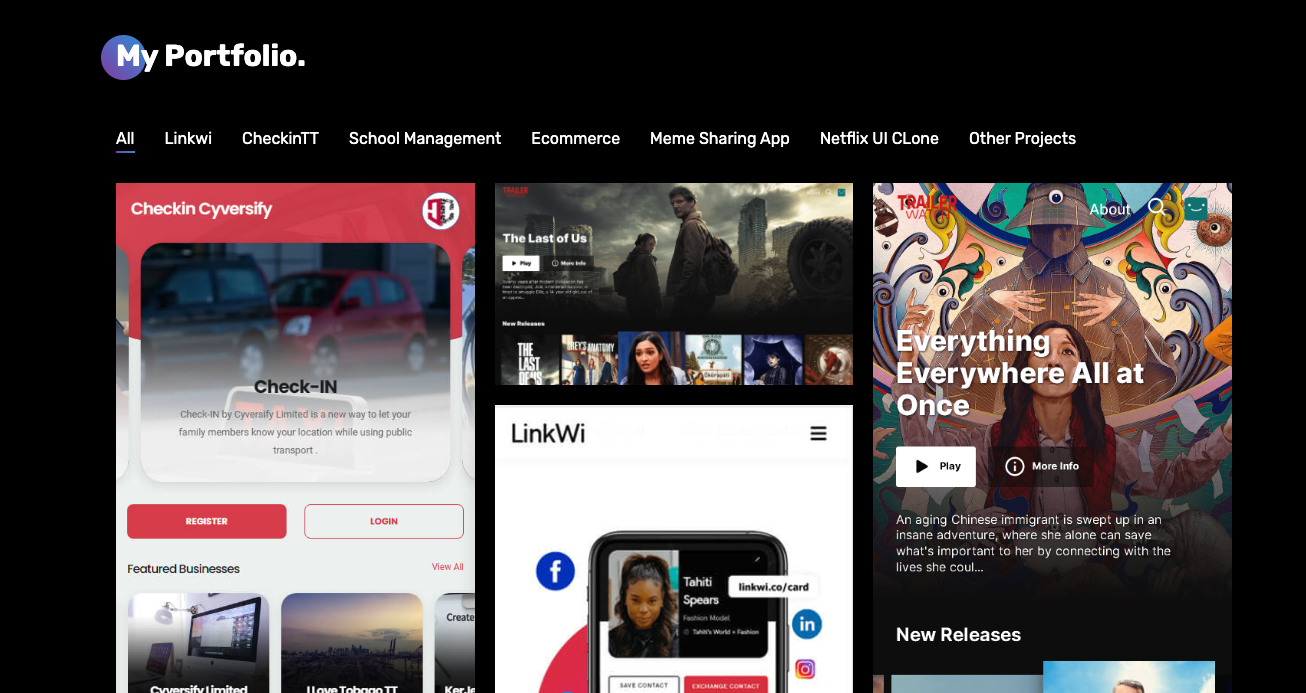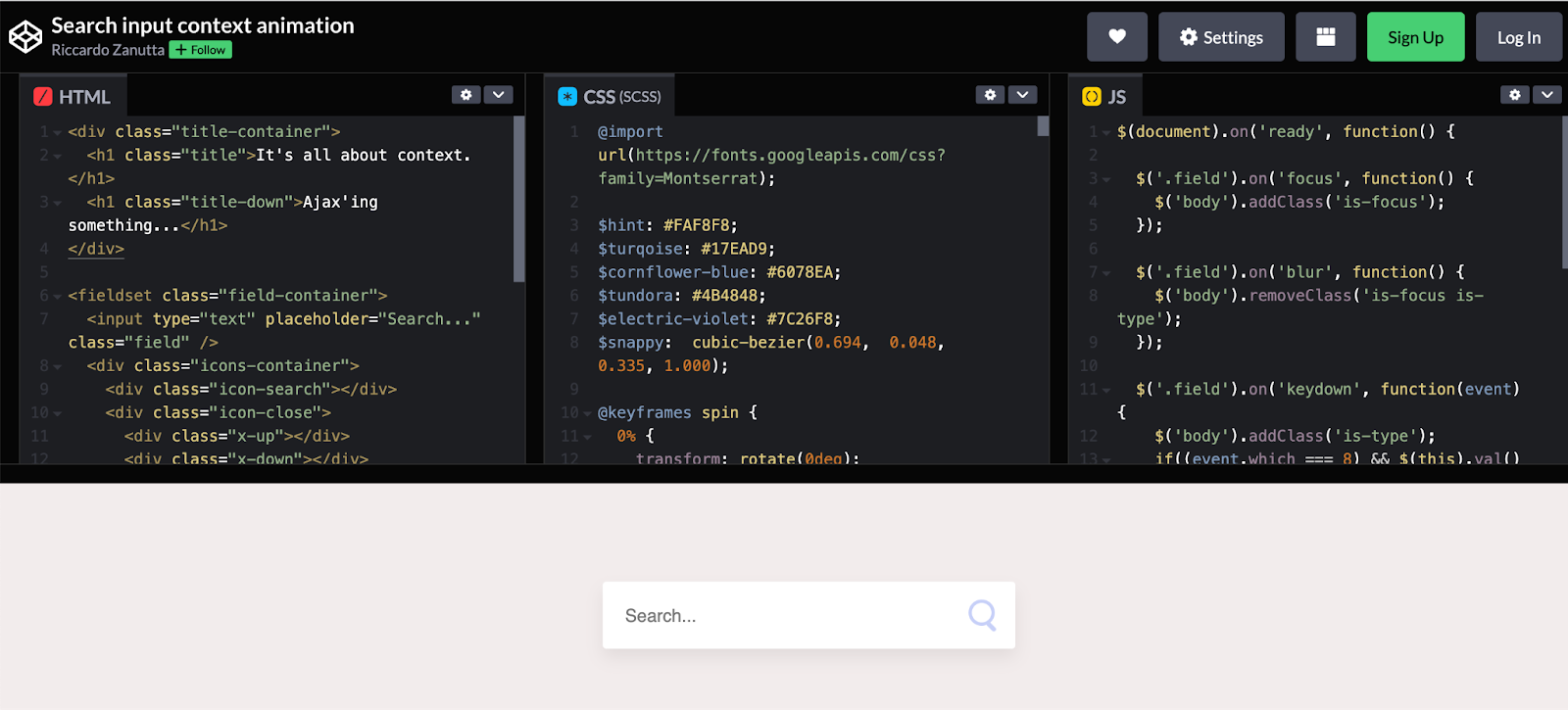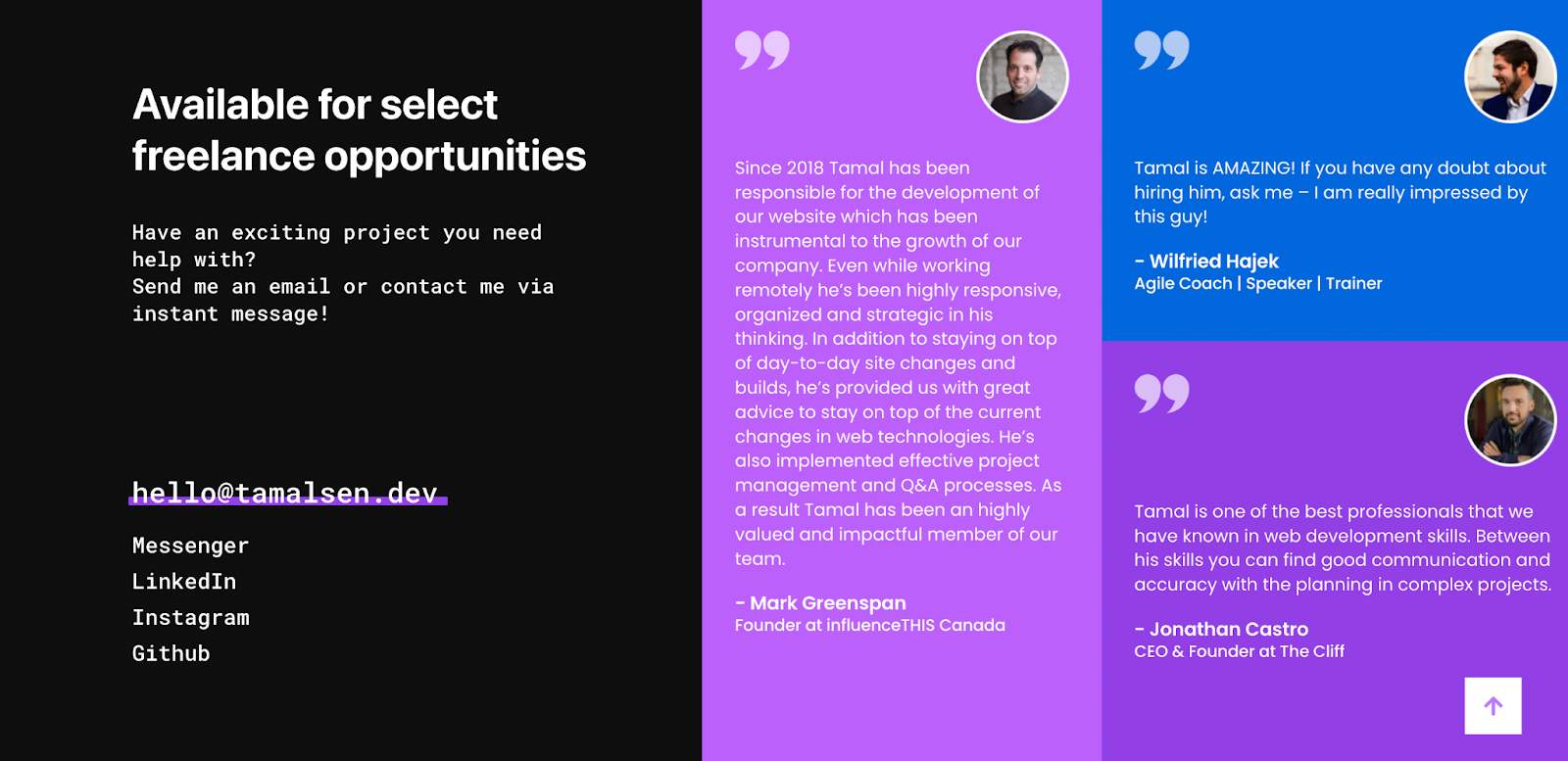You updated your resume. You’ve researched the company. You prepped for a call with the recruiter. But are you prepared to show examples of your work? And what work can you even show if this is your first tech job?
When you’re on the hunt for a new job as a software developer or web dev, many companies will ask you to share a portfolio of your work. A software engineer portfolio is a collection of projects that showcase your code samples, technical skills, and overall capabilities. And even if you’re applying for your first job, you should have a portfolio ready to share with your potential employers.
Whether you’re just starting your tech career or you’re a little more seasoned, keep reading for five tips to craft an outstanding software engineering portfolio. What should a portfolio include? How should you present it? All your questions are answered below.
1. Choose the right platform
Where you choose to host your web developer portfolio or software engineer portfolio is just as important as what’s in it. That’s because you want your reviewers to be able to easily skim your work and access the information they need.
There are a variety of places to host your software engineering portfolio, but here are a few that our career coachesThe Benefits of Working with TripleTen Career Coaches recommend:
- Build your own website. Building your own developer portfolio website gives you full control over the design and content. Showing off a personal website also gives you the opportunity to flex the skills you’ve learned throughout your training. And, as a bonus, it’s one more site you’ve built that you can add to your resume!
- Use GitHub. GitHub is a go-to toolHere’s Why IT Newbies Should Join GitHub Immediately for techies. It’s a locus for the worldwide developer community where coders can store, track, and collaborate on software projects. And if you want to build a software engineer portfolio, GitHub Pages is a free option if you’re already using GitHub for version control.
- Showcase on your LinkedIn. While LinkedIn isn’t the best resource, keeping your profile current is always recommended. Link to your web developer portfolio or your software engineer portfolio website so recruiters and hiring managers can easily find what they’re looking for.
2. Show your creativity
Yes, you can keep it simple, but a creative online portfolio is so much more fun! The design of your portfolio website is another opportunity for you to showcase your skills, your personality, and your creativity. And especially if you’re a front end developer, this is a prime way you can make a good first impression.
But even if you use a template, you still can infuse your own personality into your portfolio. Here are three examples to strike that creative spark.
- Gamify your portfolio. Turn your work into an interactive widget that engages your readers. Take a cue from Jesse Zhou, who presents his projects as if in a game, making you feel like you are in the metaverse and choosing a drink from a vending machine.
- Use photos or videos. Do you have a side hustle as a photographer? Use your own images to set your portfolio apart from others that use stock images.
- Build a portfolio based on a theme. To help create a software engineering portfolio that stands out, pick a theme. For example, you might be interested in building a career in the cybersecurity industry. Create a portfolio that’s themed around that topic. You can use colors, photos, and headers to bring it all together.

3. Select your best projects
You want your web developer portfolio or software engineer portfolio to show the range of projects you’ve worked on. These projects could be from professional work completed for clients or employers or even personal or open-source endeavors. Got something you’re proud of achieving in your career as a web developer? Show it off!
- Provide the project details. For each project, provide a brief description explaining its purpose, the problem it solves, and the technologies or programming languages you used. Include screenshots, live demos or repository links, and any notable features or challenges you faced during development. Include examples of challenging problems you have solved or technical hurdles you have overcome. Explain the approach you took and the outcome you achieved. This will showcase your problem-solving abilities and your ability to think critically.
- Consider your target industry. As you work on more projects, consider your ideal industries. For example, if you’re interested in working in education technology, make sure you feature any projects or work that touches that space. If you don’t have any projects that are directly related, comment on how your projects are still germane and how what you did can transfer to that industry.
- Use filters or tags to group topics. Whether you want to highlight an industry or type of work you did, consider using filters at the top to easily identify different categories. Kerwin Thompson used the top of his portfolio to give readers a snapshot of his work at a glance.

4. Highlight your technical skills
A musician needs to prove their adroitness at an instrument, a sushi chef needs to show mastery of knife skills, and a teacher needs to demonstrate expertise in their subject. Regardless of your profession, if you want to secure a job, you need to illustrate that you’re the best candidate.
When you’re creating your software engineering portfolio, make sure you remember to highlight the technical skills you’ve learned along the way.
- Make a separate skills section. Create a section dedicated to listing your technical skills and proficiencies. Include the programming languages, frameworks, libraries, tools, and methodologies you know. Organize them clearly and concisely.
- Showcase your code. Share code snippets for your projects to give hiring managers insight into your coding skills. You’ll demonstrate your ability to write clean, well-structured code. Highlight any specific coding conventions, design patterns, or best practices you followed. Not sure how you can easily present your code? Riccardo Zanutta took snippets and created a simple layout to feature that code.
- Verify with a professional. A common mistake is sharing projects with broken code or portfolios that aren’t digestible. Ask your friend or colleague to check your portfolio — and review your codeTripleTen Code Reviews: Why, Who, How?.

5. Highlight your achievements
When you’re interviewing, it can feel awkward to talk about yourself. But interviewers want to know why you’re the best candidate. What makes you different from the other candidates? It’s not just about the actual projects. Are you going to work well with the rest of the team? What additional skills can you add to the mix?
Round out your portfolio by highlighting the achievements that set you apart from the pack. Here are three tips to make those achievements pop.
- Incorporate testimonials and recommendations. Include positive feedback or recommendations from clients, colleagues, or mentors. This will demonstrate your ability to collaborate effectively, deliver high-quality work, and solve problems.
- Add your education and certifications. You don’t need to have a master’s degree in software engineering to be successful in tech. Whatever your training — a bootcamp, certification, or full-time course — it will provide a strong endorsement of your skills and help you land a job. Make it easy for people to see what your training is and be sure to list the skills you learned along the way.
- Keep your portfolio updated. Congrats on making it this far in creating your portfolio! The final step is to remember to update your profile to include new projects, skills, or achievements. A portfolio should always give potential employers, clients, or collaborators a comprehensive overview of your career. As you gain more experience, replace older projects with newer and more relevant ones. This can even take the form of a section of blog posts highlighting your latest achievements in, say, web design.

Let TripleTen help build your portfolio
Now that you have some ideas on how to structure your portfolio, it’s time to fill it. At TripleTen, you’ll finish your bootcamp with a ready-made portfolio with real cases, code, and testimonials, all designed to convince future employers of your professionalism.
But you don’t have to take it from us. Check out video testimonials from our grads to see how we’ve helped them transform their careers.
.png)





.jpg)
.jpg)


.png)







